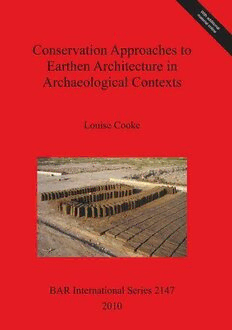
Conservation Approaches to Earthen Architecture in Archaeological Contexts PDF
195 Pages·2010·41.698 MB·English
Most books are stored in the elastic cloud where traffic is expensive. For this reason, we have a limit on daily download.
Preview Conservation Approaches to Earthen Architecture in Archaeological Contexts
Description:
This publication summarises research investigating approaches to the conservation and management of earthen architecture. A number of these different earth-building techniques also make use of earthen mortars and/or earth plasters or renders. In these different forms earth has been used as a building material for domestic, religious, burial, administrative, palatial and domestic structures for the last ten millennia - the legacy is both monumental and vernacular. This research explores these approaches to earthen architecture around the world, and with particular reference to the study area - Iran, Uzbekistan, and Turkmenistan. The different approaches to conservation and management are critiqued in relation to their practical effectiveness, relationship to conservation theory, values of earthen architecture and sustainability. This study uses the identification of the materials and techniques used for the conservation and management of earthen architecture as a means to understand, articulate and explore attitudes and approaches to the building material, within the context of wider conservation and heritage theory. Part 1 examines earthen architecture, its study, use, physical properties and more abstract values. Part 2 examines conservation approaches to earthen architecture in archaeological contexts. The CD contains appendices of supporting data referred to in the main text.
See more
The list of books you might like
Most books are stored in the elastic cloud where traffic is expensive. For this reason, we have a limit on daily download.
